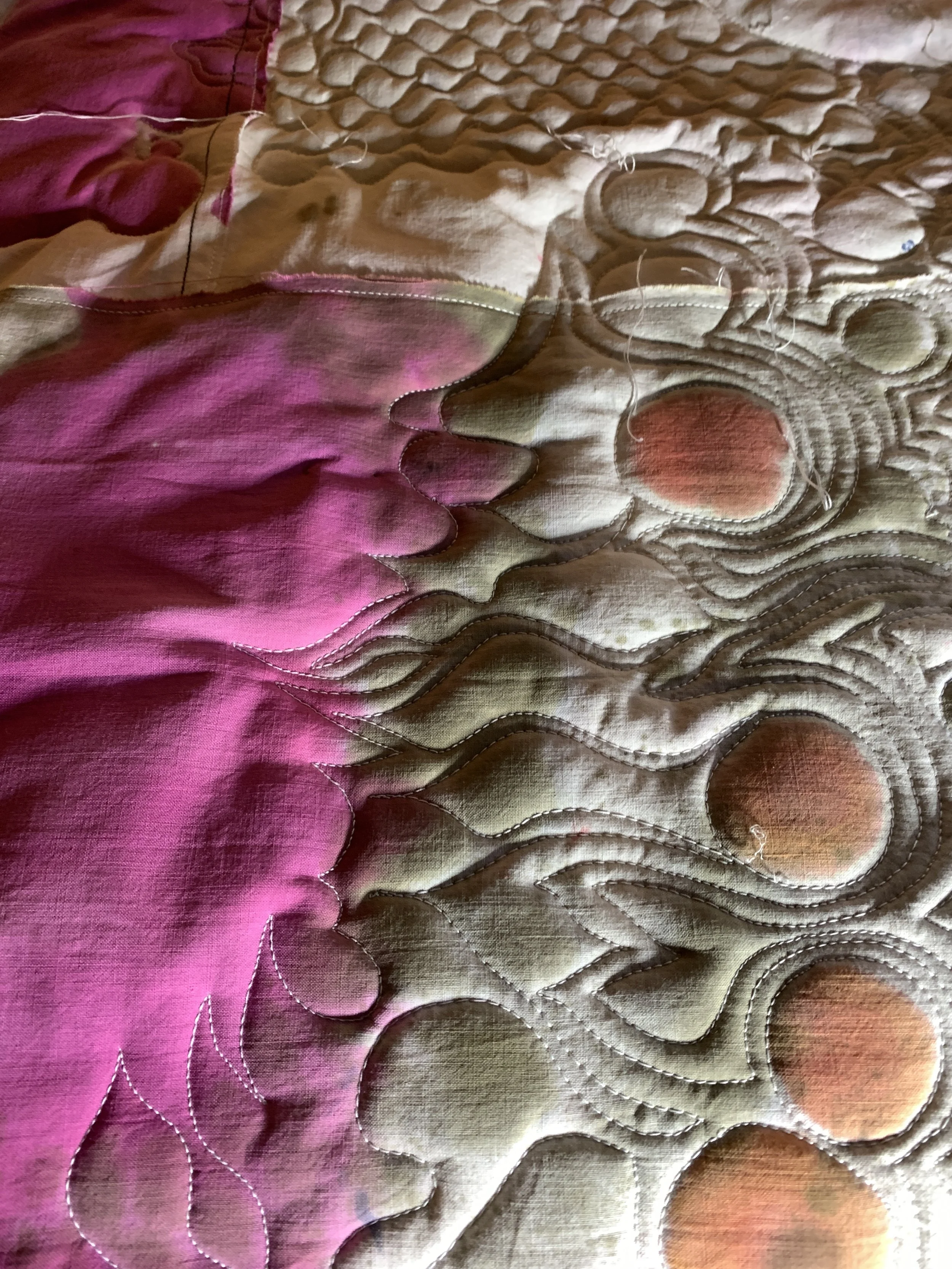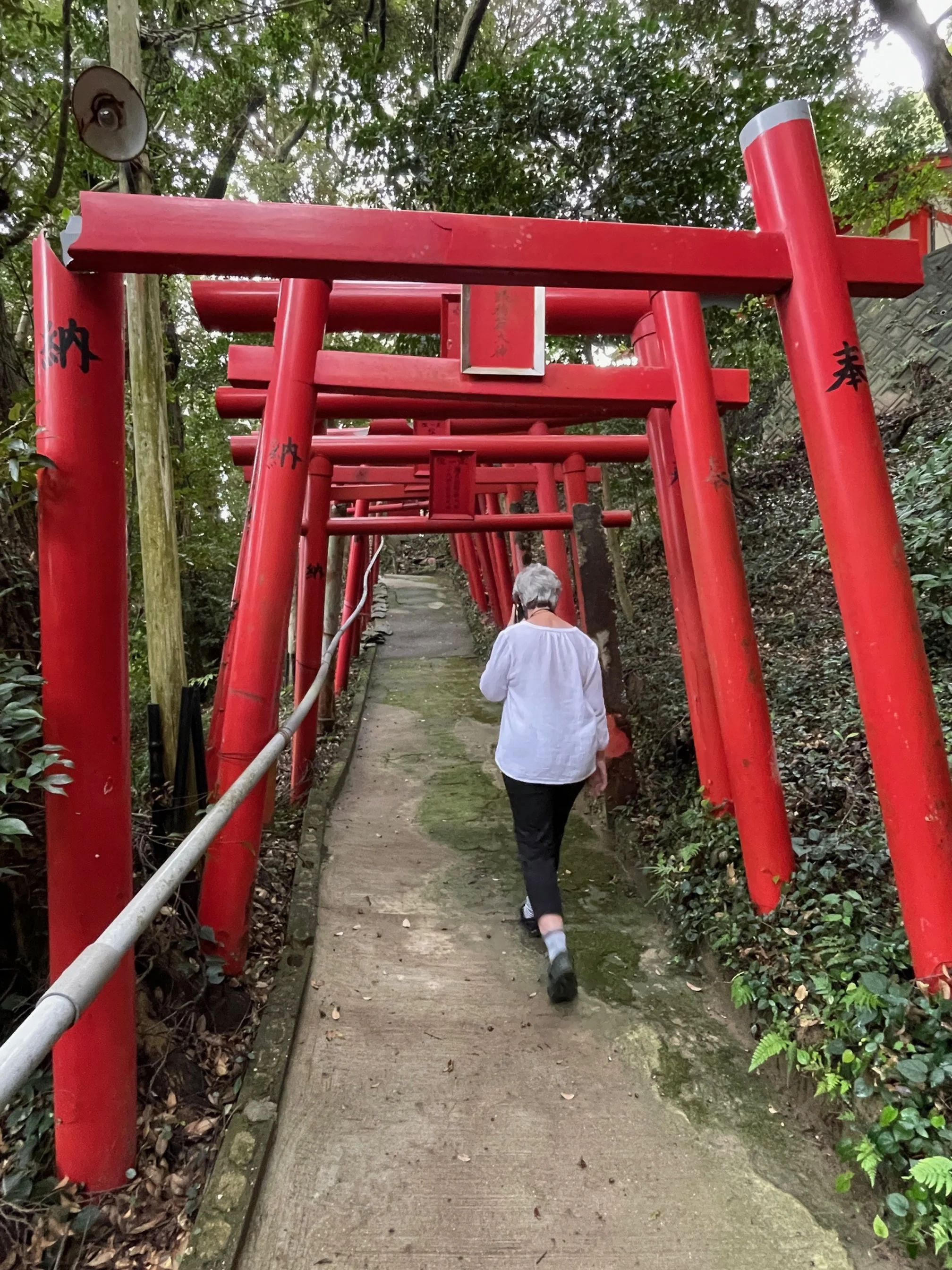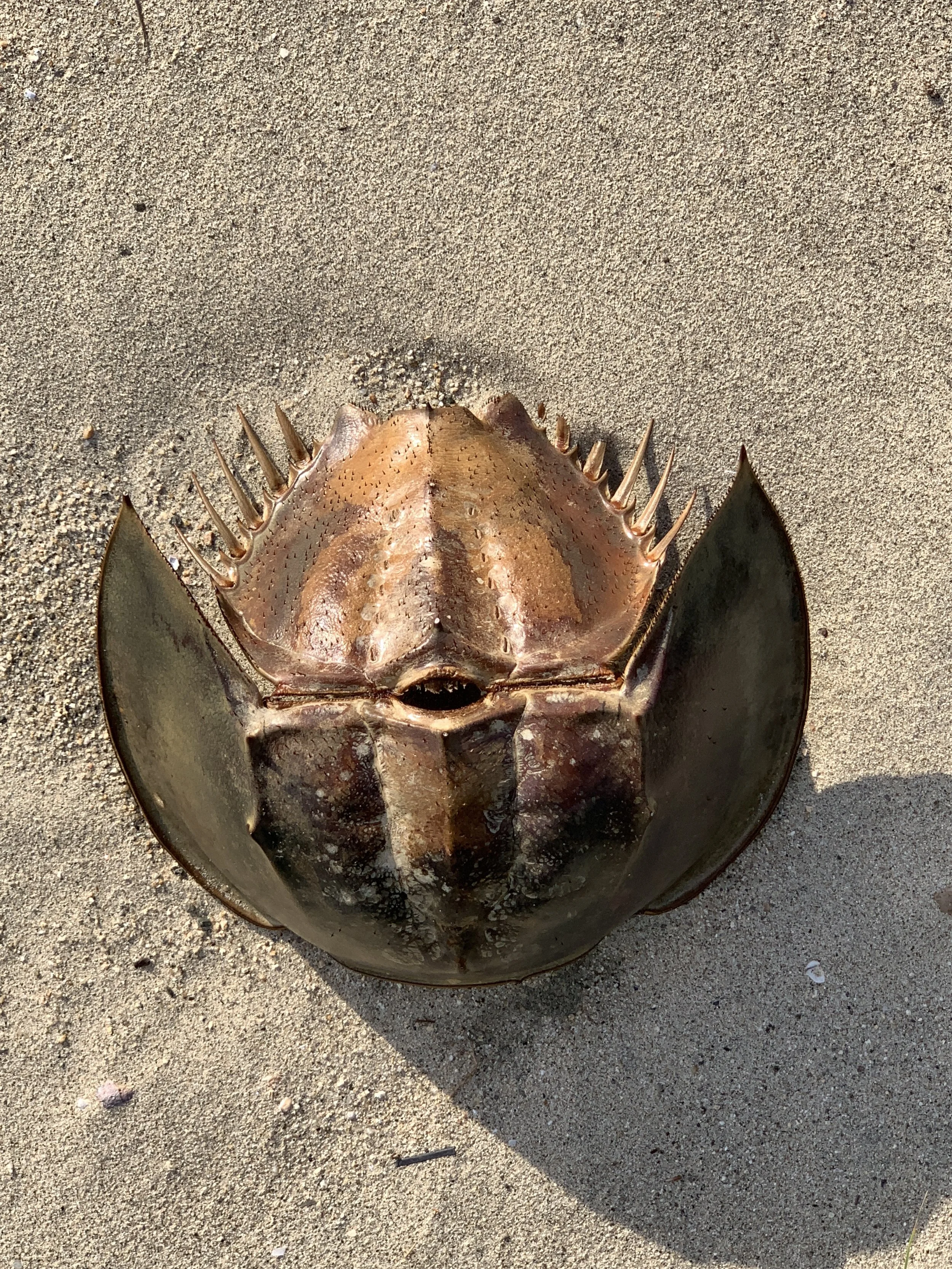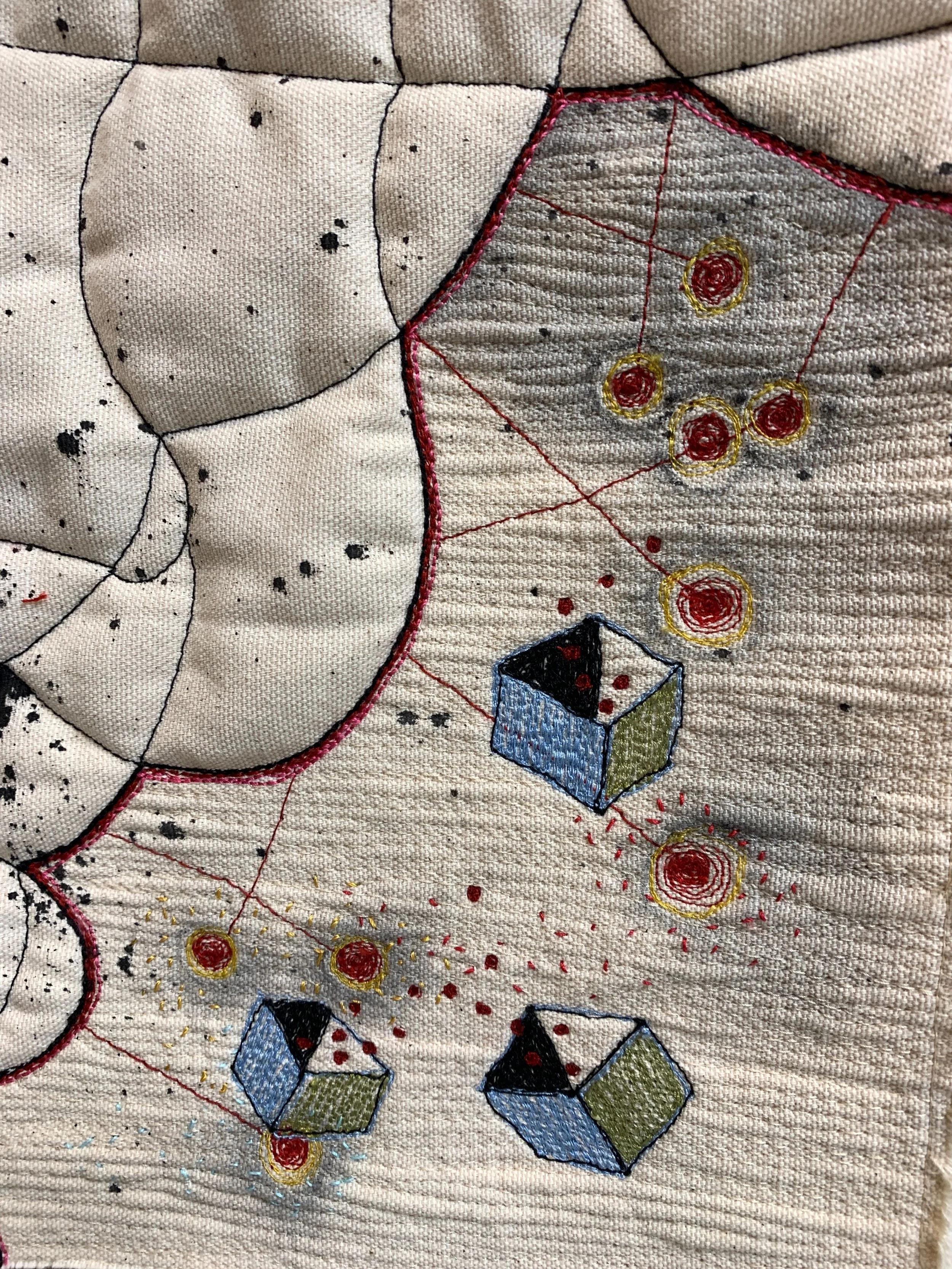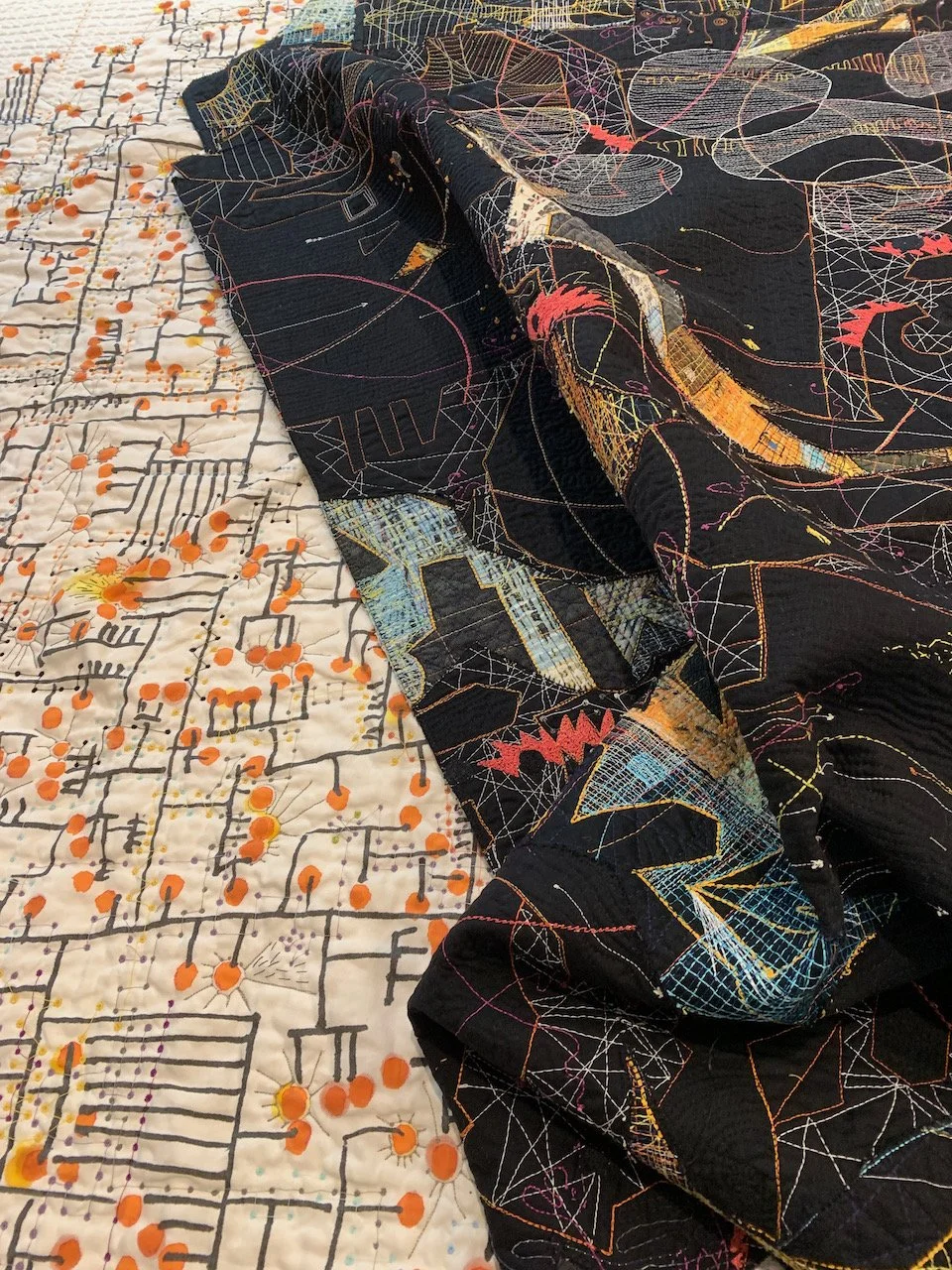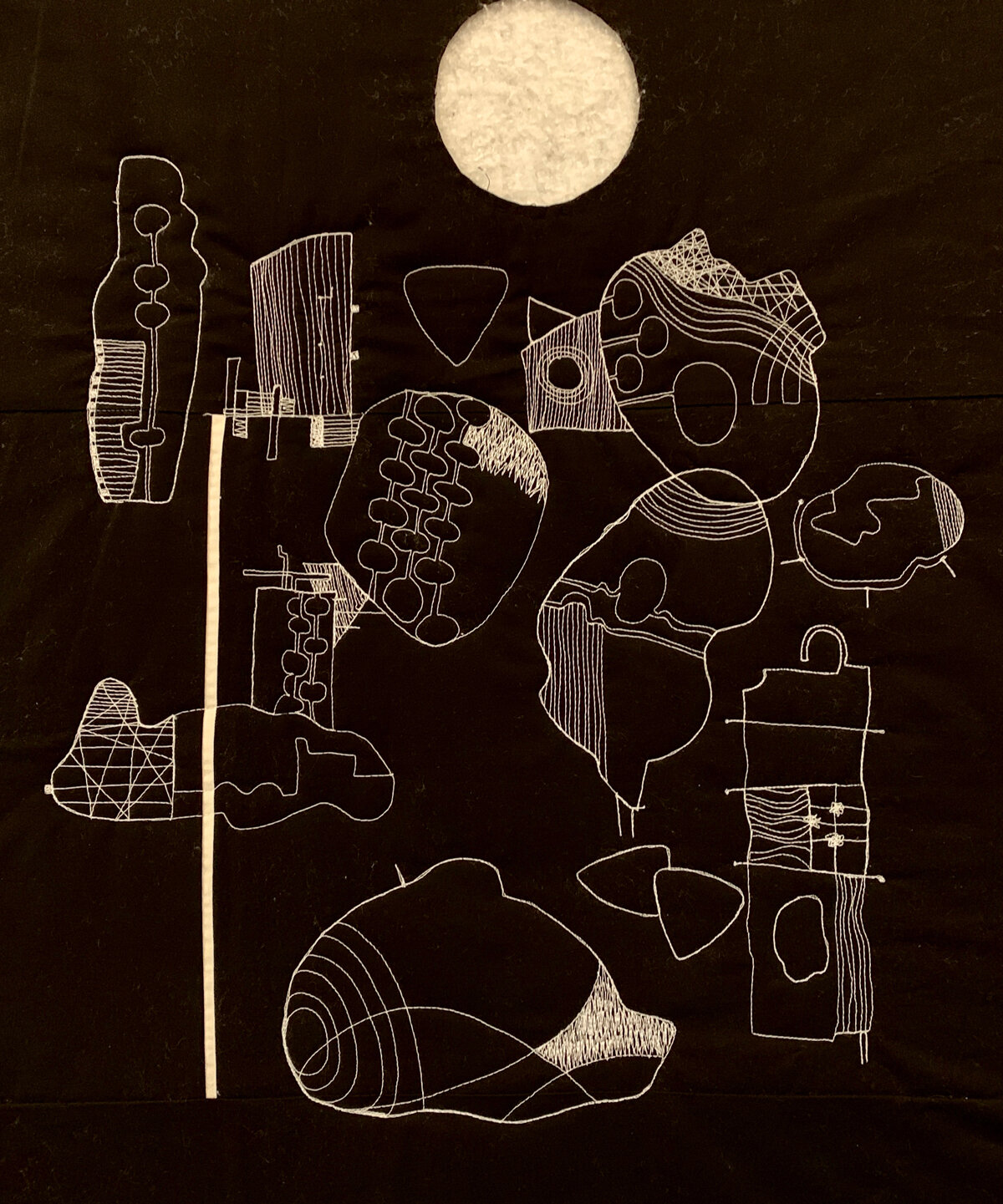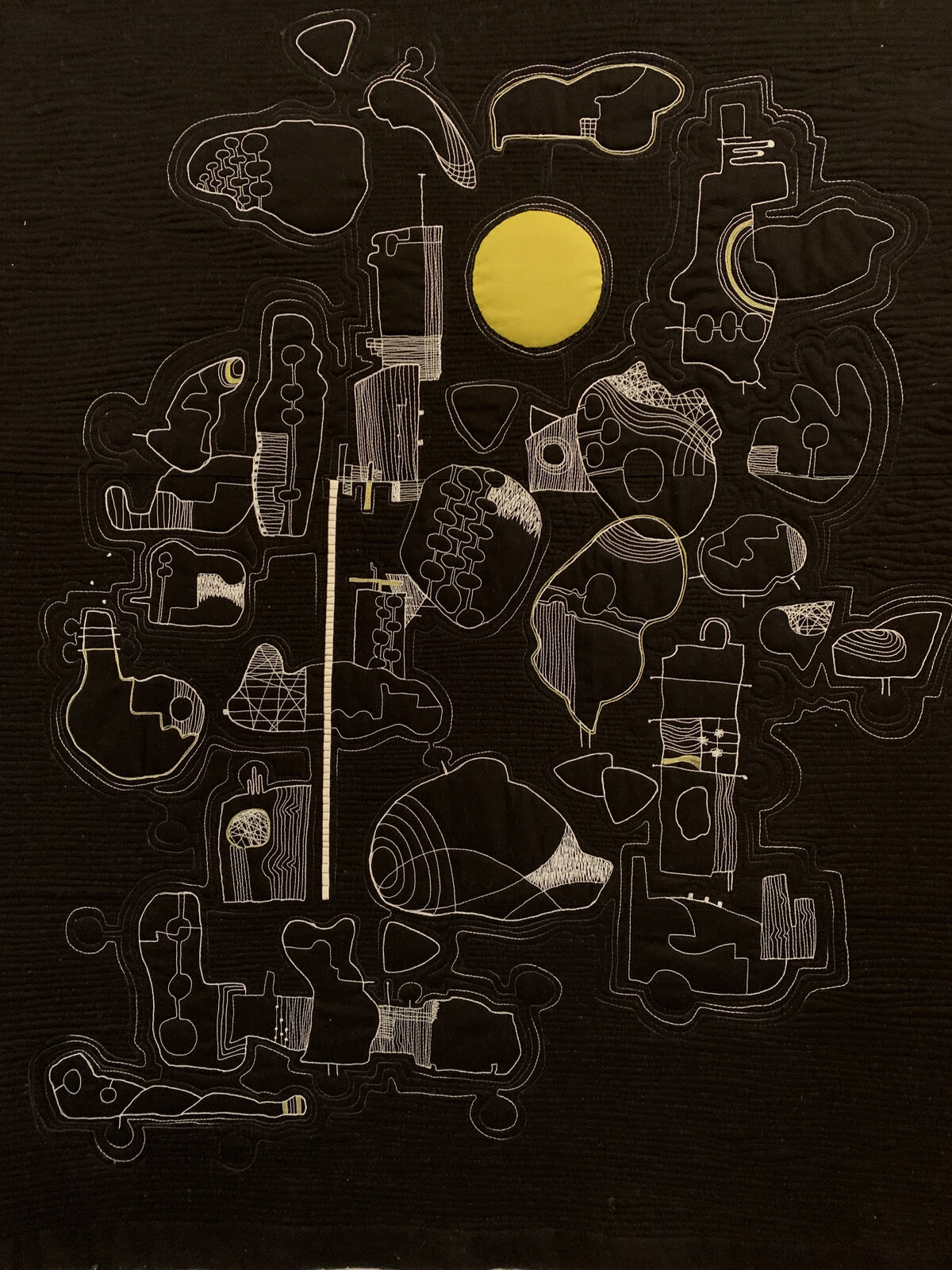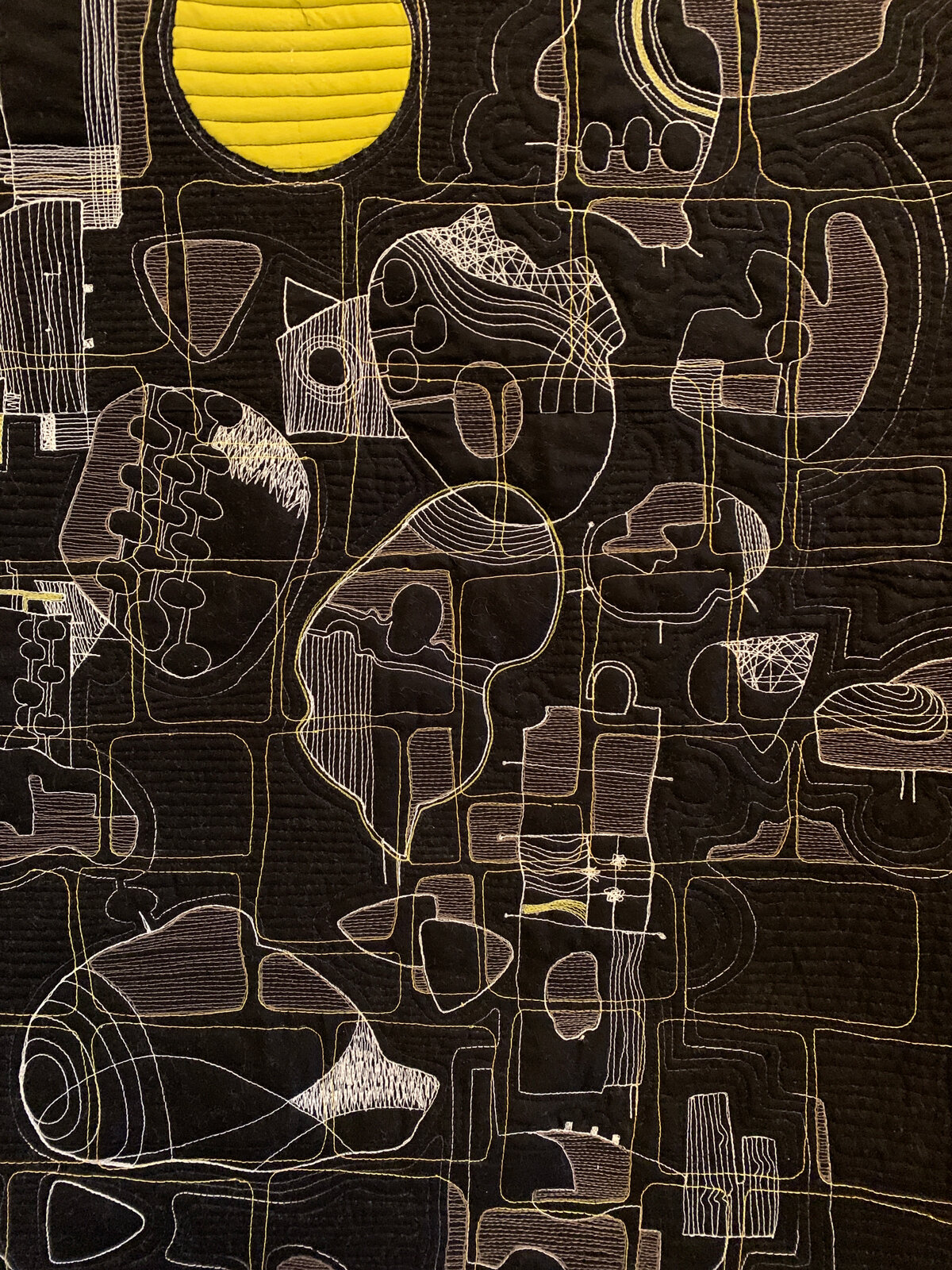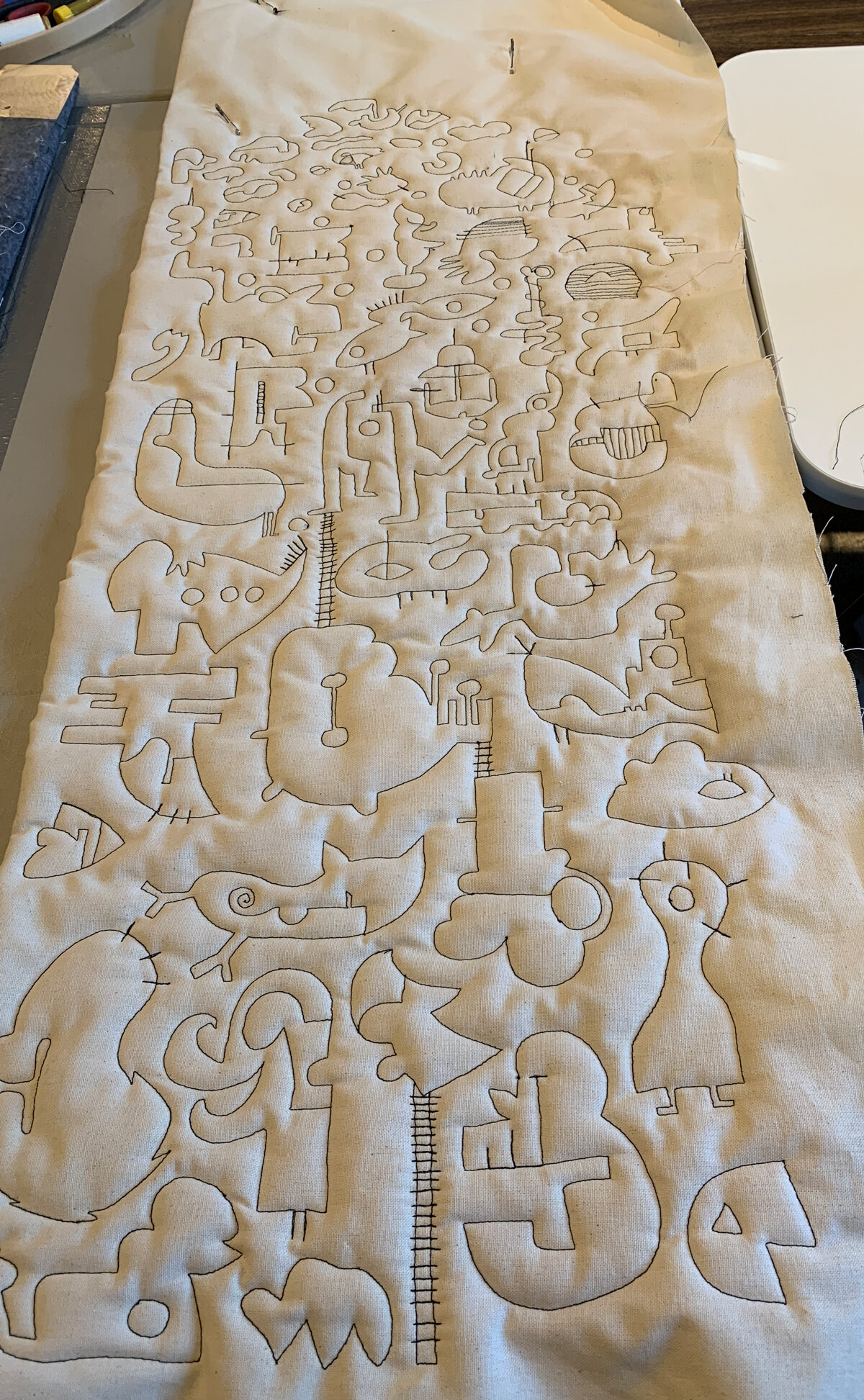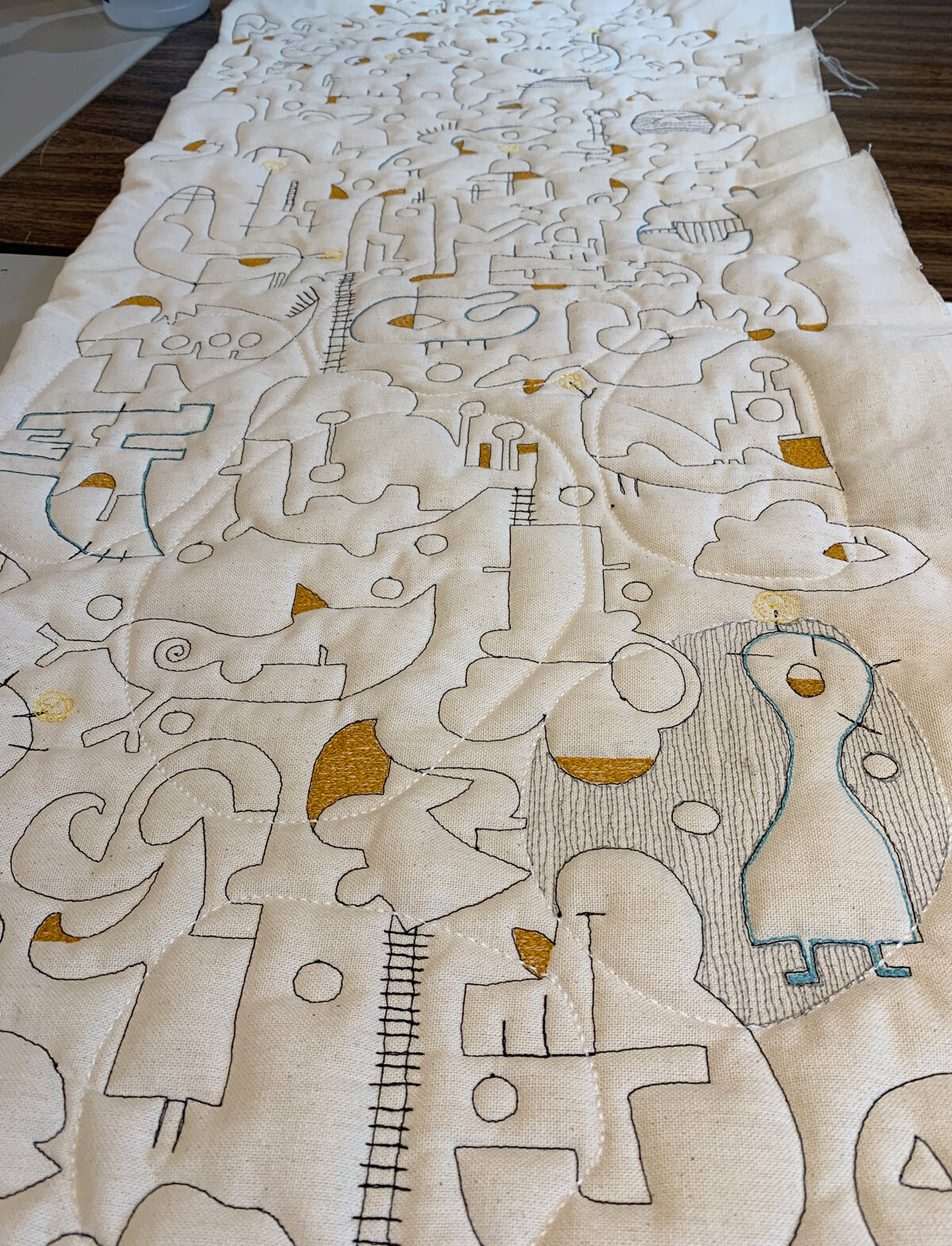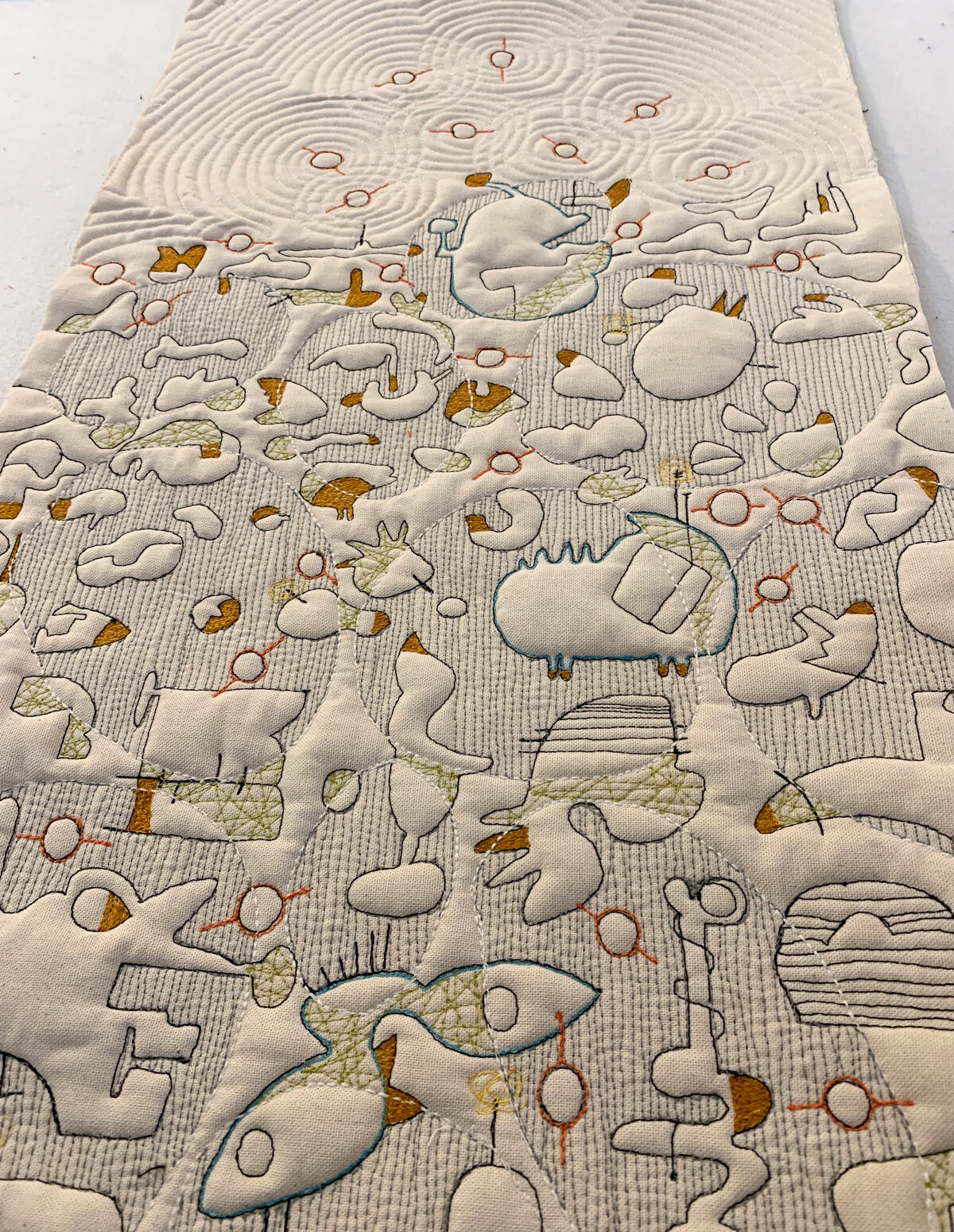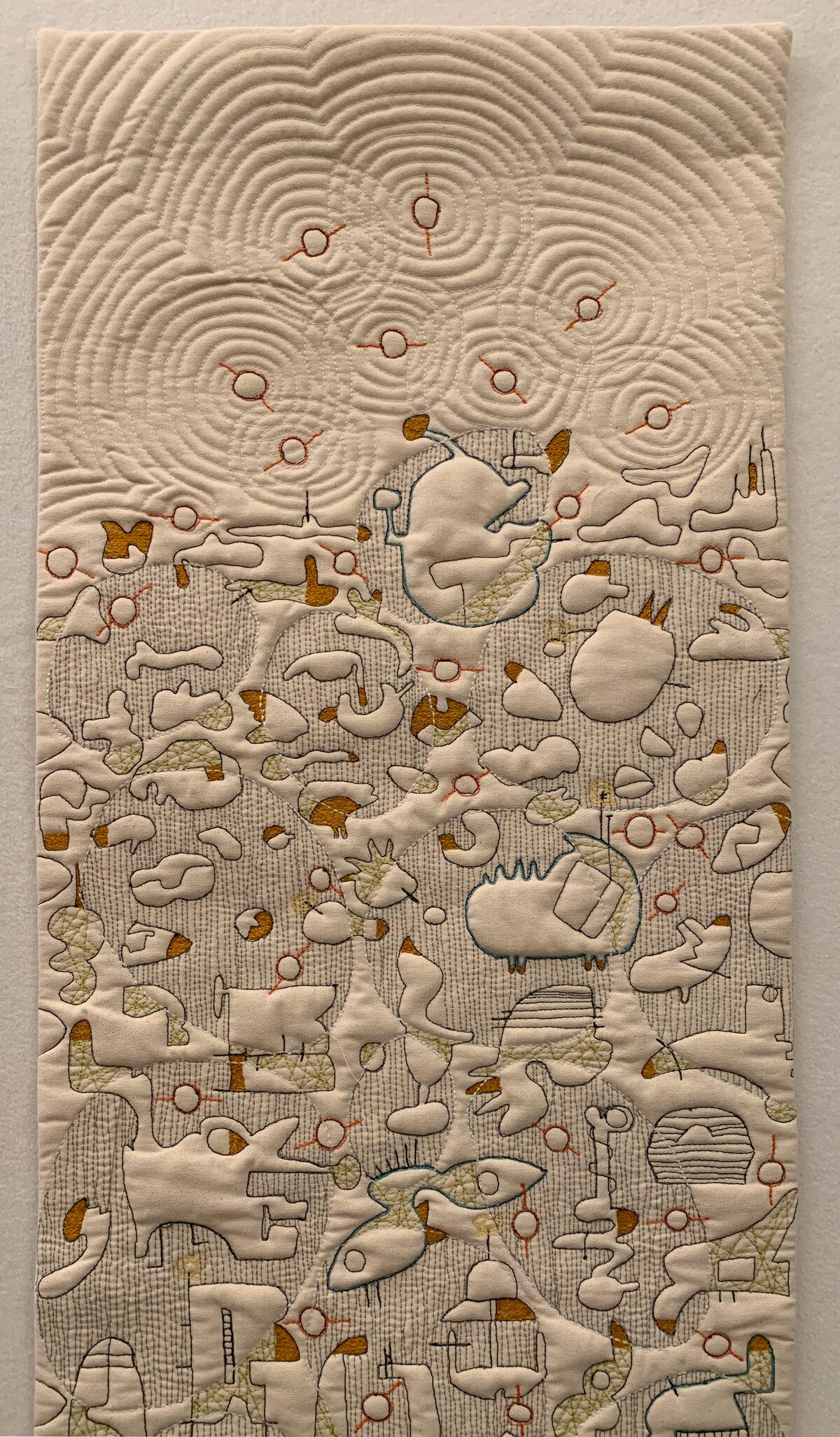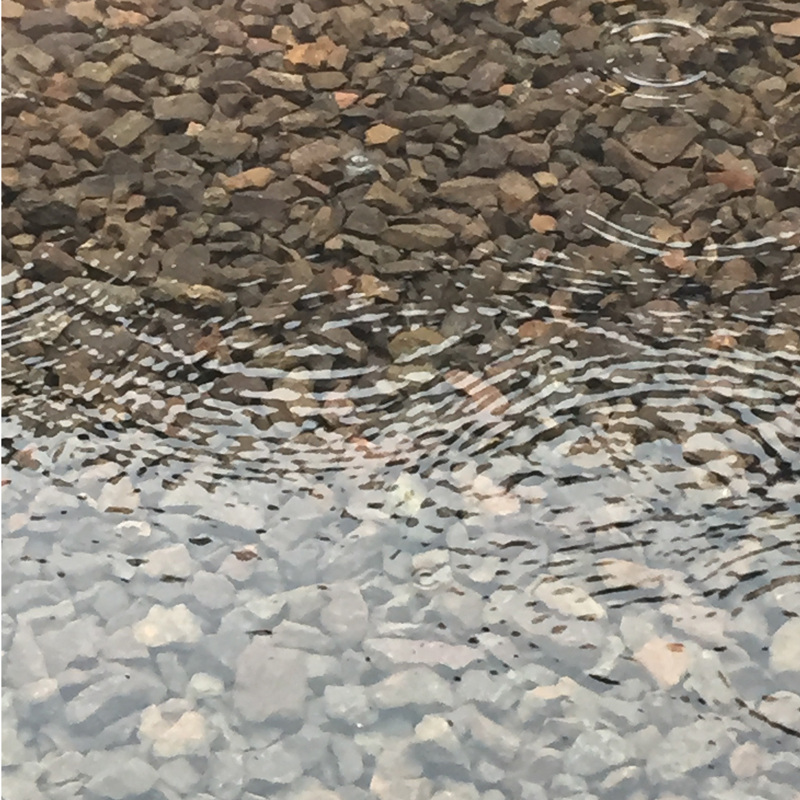Since I am unable to stand for very long while my foot heals I am focusing on things I can do while sitting. And, luckily, sitting at a sewing machine is one of them. I am using this time to do a little experimenting. Experiments in texture.
I use prepared quilt sandwiches that are always sitting at the side of my sewing machine. These 14” x 14” squares are easy to manipulate, unintimidating and always available. I can stitch on them without the feeling that they have to be masterpieces. I can twist and turn on them, splash paint on them or add new layers to them. I can even cut them up to make something new.
I started with this experiment:
I used a lightweight cotton canvas, wool batting and black thread to stitch these rectilinear forms in clusters. Each form is a simple wonky square or triangle that spirals into the center. The thread stops and starts in each form. Normally I would knot and bury the threads at the end and beginning of each form but with this experiment I just clipped them. Leaving the center of the spiral blank left little textural crowns in each form.
I have a lot of batting in my studio. These are three I used in these experiments. The two at the top are wool, my favorite batting. Sometimes I use two layers of wool batting or one of wool and one of cotton to a piece if I want the texture to be more defined. The one on the bottom is an upholstery batting used to cushion arms and seats on chairs. It’s almost one inch thick. I used it for the next experiment.
Notice that the “crowns” are even more defined using this batting. And the rippling that occurs when I stitched the horizontal lines coming out of the forms is very strong. This fat batting actually caused the square to warp and cinch into the middle. It gave me the idea for another experiment: How can I use that cinching to my advantage? Hmm…more on that later perhaps.
Next step, how does a patterned stitch affect the bumpiness of the surface? Notice how the closer I stitch the flatter the fabric. The open repeat pattern in the lower left has pronounced bumps while the sitched repeat patterns at the top right are flatter and more subtle.
I love the bumps, who doesn’t love bumps? The challenge is how to add those bumps in a way that makes sense. Bumps can be heroes or pimples on a flat. They can be intentional or accidental.
In my piece, Stream of Consequences, I used the idea of bumps to define the clouds in the composition. The transition from the flat repeat horizontal lines at the top left to the cloud like bumps at the right shows how controlling your bumps can define the message of the piece.
I start with these questions with each piece that I work on: What combination of fabric and batting is appropriate for my message? How does the patterned stitching I use add to or detract from the whole? How close should my stitching be? What color of thread works for the message I am trying to communicate? How big should the bumps be?





